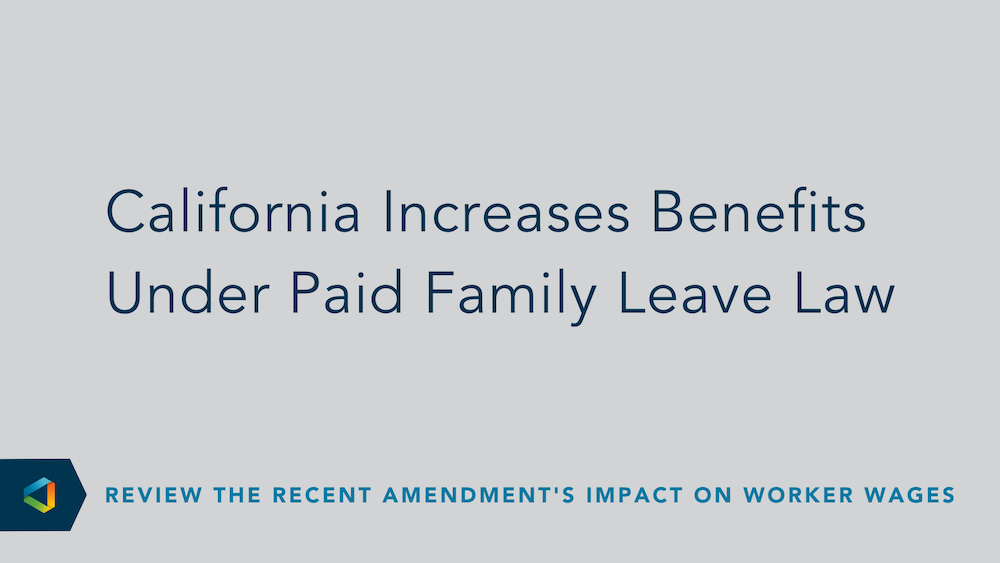Compliance Confidence
Employee Leave: Clarifying STD, FMLA, and ADA
Employee Leave: Clarifying STD, FMLA, and ADA
Federal laws such as the Family and Medical Leave Act (FMLA) and the Americans with Disabilities Act (ADA) govern an employer's obligation in providing disability or disability-related leave.
In addition to federal requirements, many states and municipalities have enacted their own employee leave laws. Due to the various leave requirements, employers may have a hard time understanding how different leaves coordinate with each other and how wage replacement benefits fit into the equation.
The purpose of this article is to clarify the differences between the FMLA, the ADA, and short-term disability (STD) laws, as well as to help employers better understand their leave of absence (LOA) management obligations. Employers must keep in mind that state and/or local leave laws may also need to be considered. Coverage of changes to state and local leave of absence legislation can be found throughout our Compliance Confidence blog.
Short-Term Disability vs. FMLA
Short Term Disability (STD) is not a form of job-protected leave with rights to continued health coverage and job reinstatement. Instead, STD is a type of disability insurance coverage that provides income protection for employees when they are unable to work due to an injury or illness. STD coverage usually begins within one to 15 days of the event causing the disability (i.e., a waiting period) and typically lasts for about 10 to 26 weeks, although this varies by policy. When this STD coverage ends, long-term disability (LTD) coverage typically takes effect if the original illness or injury persists beyond the length of the STD policy.
FMLA, on the other hand, is a federal law that provides eligible employees with unpaid leave, job reinstatement rights, and continued health insurance benefits for up to 12 weeks when an employee experiences certain family or medical events. On a federal level, employers are not required to provide STD benefits to their employees; however, six localities have laws that require disability coverage: CA, HI, NJ, NY, PR, and RI.
Eligibility
Eligibility for STD benefits is described in the certificate of coverage provided by the carrier, or in the plan document if the STD plan is self-insured or a salary continuation plan. Eligibility for FMLA leave is determined on the federal level and is described in the Department of Labor's Employer’s Guide to FMLA.
Employers must take care to check whether or not they are subject to the law, and then check whether or not the employee in question is subject to the law. In general, an employer is subject to FMLA if it employed 50 or more employees for 20 or more weeks during the current or previous calendar year. When making this determination, an employer or group of employers must count all employees working for different entities that are under common ownership. An employee is subject to FMLA if they have:
- Worked for the employer for a minimum of 12 months before the leave starts.
- Has worked at least 1,250 hours for that employer during the preceding 12 months before the leave starts.
- Works at a location where the employer has 50 or more employees in a 75-mile radius.
Depending on the situation, an individual may be eligible for STD, FMLA, both, or neither. When an employee is eligible for benefits under both an STD plan and for leave under FMLA, STD and FMLA will run concurrently. In this situation, neither the employer nor the employee can require the employee to use available paid time off. This is because leave under a disability plan, such as STD, is not unpaid leave. An employee who is eligible for STD benefits while taking leave under FMLA leave does not receive any extra leave benefits.
The ADA
The ADA requires employers to refrain from discriminating against qualified individuals because of a disability and to provide a reasonable accommodation to individuals with a disability. Providing leave is considered a reasonable accommodation under the ADA. Need for leave under the ADA may arise when a disabled employee exhausts job-protected leave (such as under the FMLA), or when he or she is ineligible for such leave.
The amount of time that will be considered reasonable will depend on the specific facts and circumstances of the situation. Leave as a reasonable accommodation includes the right to return to the employee's original position. However, if an employer determines that holding open the job will cause an undue hardship, then it must consider whether there are alternatives that permit the employee to complete the leave and return to work.
The ADA does not come with any requirements to continue group health benefits. However, if the employer has a company leave of absence (LOA) policy that provide coverage during a leave or working part-time, then the employer needs to comply with the LOA policy. Therefore, continuation of these benefits is determined based on plan terms.
It may be helpful for employers to think of STD benefits as wages an employee may be eligible for when on leave, but that do not provide for the employee’s leave. The ADA comes in when FMLA is exhausted or unavailable to a disabled employee.
Tracking and administering employee leave requirements can be a challenging and time-consuming task. With the cost of leave mismanagement growing by the year, many employers are turning to leave management outsourcing solutions for assistance.
For additional leave of absence guidance and best practices, review this Leave of Absence Mangement Toolkit made for Employers.




